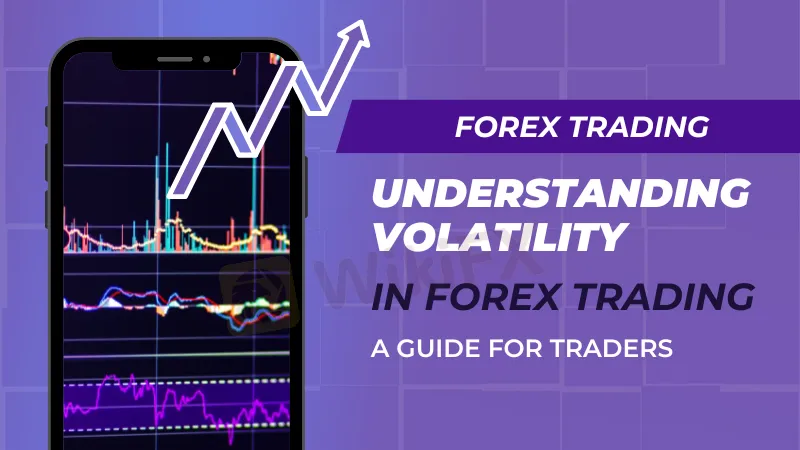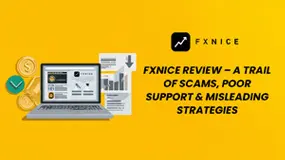简体中文
繁體中文
English
Pусский
日本語
ภาษาไทย
Tiếng Việt
Bahasa Indonesia
Español
हिन्दी
Filippiiniläinen
Français
Deutsch
Português
Türkçe
한국어
العربية
Understanding Volatility in Forex Trading: A Guide for Traders
Abstract:Mastering Forex Volatility: Explore its causes, measurement, impact, and strategies for successful trading in dynamic currency markets.

The world of Forex trading is marked by its dynamic and often unpredictable nature, making understanding the concept of volatility not just beneficial, but essential for traders. Volatility, in its simplest form, measures the frequency and magnitude of a currency pair's price movements over time. It's a pivotal indicator that offers a glimpse into the market's mood, presenting both risks and opportunities for traders. In this detailed analysis, we delve into the nuances of Forex volatility, exploring its causes, measurement methods, implications, and strategies for effective trading.
Deep Dive into the Causes of Forex Volatility
Forex volatility is influenced by a multitude of factors, each contributing to the market's fluctuations:
1. Economic Reports: Data such as GDP growth, unemployment rates, or inflation figures can significantly impact currency values, leading to heightened volatility. A strong economic report may bolster a currency, while a weak one could lead to depreciation.
2. Political Instability: Elections, policy changes, or geopolitical tensions can inject uncertainty into the markets, causing sharp price movements as traders react to the news.
3. Global Events: From natural disasters to pandemics, unforeseen global events can cause abrupt shifts in investor sentiment, influencing currency volatility.
4. Market Liquidity: The level of trading activity in a currency pair can also affect its volatility. Major pairs with high liquidity tend to be less volatile compared to exotic pairs with less trading volume.

Sophisticated Methods of Measuring Forex Volatility
Traders employ various techniques to gauge the volatility of currency pairs:
1. Standard Deviation: This statistical tool measures the amount of variation or dispersion from the average, offering traders insights into the expected volatility.
2. Average True Range (ATR): ATR provides an average of past price range movements, giving traders a historical perspective on volatility.
3. Bollinger Bands: These bands adjust themselves based on market volatility, widening during volatile periods and contracting during less volatile times.
The Critical Role of Forex Volatility in Trading
Understanding volatility is crucial for traders as it directly influences their risk and reward potential:
1. Trading Strategies: High-volatility environments might suit aggressive traders looking for significant profits, while low-volatility situations might appeal to those preferring a more conservative approach.
2. Risk Management: Volatility awareness helps in setting appropriate stop-loss and take-profit levels, crucial for effective risk management.
Factors That Shape Forex Volatility
Several elements shape the volatility landscape in Forex trading:
1. Economic Indicators: Key data releases like interest rate decisions or trade balance reports can trigger immediate reactions in the Forex market.
2. Political and Global Events: Elections, trade agreements, or international conflicts can lead to sudden shifts in currency values.
Identifying the Most Volatile Currency Pairs
While all currency pairs exhibit some degree of volatility, certain pairs are inherently more volatile:
1. Exotic Pairs: Pairs involving emerging market currencies typically display higher volatility due to economic instability and lower liquidity.
2. Time-Specific Volatility: Currency pairs can exhibit varying levels of volatility depending on the trading session, influenced by the opening and closing of financial markets around the world.

The Impact of High Volatility on Forex Spreads
High volatility periods can lead to wider spreads in Forex trading:
1. Increased Trading Costs: Wider spreads mean higher costs for entering and exiting trades, directly impacting profitability.
2. Dynamic Spreads: In volatile markets, spreads can fluctuate rapidly, posing a challenge for cost prediction and strategy formulation.
Can Volatility Indicators Foretell Market Movements?
While volatility indicators provide valuable insights, they are not foolproof predictors of market direction:
1. Direction Agnostic: These indicators signal the intensity of price movements but not the direction.
2. Use in Conjunction: For best results, volatility indicators should be used alongside other technical analysis tools.
The Influence of Major News Releases on Forex Volatility
Significant news events can lead to spikes in volatility:
- Market Reaction to News: The Forex market can react vehemently to news diverging from market expectations, causing sharp price movements.
- Short-term vs. Long-term Impact: While some news impacts are transient, others, especially those indicating economic or policy shifts, can have a more prolonged effect on volatility.
Strategies for Thriving in Volatile Forex Markets
Adapting to market volatility requires specific trading strategies:
- Trend Following: This strategy involves capitalizing on the direction of the market trend, suitable in strong, sustained volatile environments.
- Breakout Trading: Focuses on entering trades when prices break out of a defined range, often seen in periods of heightened volatility.
- Scalping: Aims to profit from small price changes, ideal for traders who prefer quick, short-term trades.
- Hedging: Involves taking offsetting positions to mitigate risk, particularly useful in unpredictable volatile markets.
Conclusion
Forex volatility, a double-edged sword, offers the potential for substantial gains but at the cost of increased risk. Traders must not only understand and measure this volatility but also tailor their strategies to navigate these fluctuating waters effectively. By mastering the art of volatility analysis and employing appropriate strategies, traders can enhance their prospects for success in the ever-changing world of Forex trading.

Disclaimer:
The views in this article only represent the author's personal views, and do not constitute investment advice on this platform. This platform does not guarantee the accuracy, completeness and timeliness of the information in the article, and will not be liable for any loss caused by the use of or reliance on the information in the article.
Read more

Olymptrade Under Fire – Fraud Allegations and Investor Outrage
The message is loud and clear for Olymptrade - Get your act RIGHT or continue to face fraud allegations and investor outrage. With investor complaints refusing to stop, Olymptrade has all but lost trust and goodwill.

Busted! 5 Brokers Blacklisted by the FCA
The FCA (Financial Conduct Authority) warns people about unauthorised brokers—operating without a proper license. If a broker is unregistered, you have no legal protection or refunds if they take your money or fail to handle it properly. FCA has recently blacklisted.5 scam brokers. Checkout the List Below.

Is the Forex Bonus a Genuine Perk or Just a Gimmick?
Have you received a forex bonus offer from a broker? Wondering whether it is a pure marketing ploy to make you a client? Your doubt makes sense! Explore this story where we have uncovered details regarding forex deposit bonus, no deposit bonus, and other types.

FXnice Review – A Trail of Scams, Poor Support & Misleading Strategies
FXnice, surprisingly, is not proving nice for forex traders all over. Traders have been requesting the company officials to allow them to withdraw their funds. However, these officials provide them a false reason, i.e., unverified accounts for withdrawal denials. Inaccurate technical tools and incompetent analysts further add to the investors' woes. Dive into this much-awaited exposure story on FXnice.
WikiFX Broker
Latest News
Brexit made businesses abandon the UK. Trump's hefty EU tariffs could bring them back
Mastering Deriv Trading: Strategies and Insights for Successful Deriv Traders
U.S. doubles down on Aug. 1 tariffs deadline as EU battles for a deal
Buffett and Thorp’s Secret Options Strategies
Trading Market Profile: A Clear and Practical Guide
CNBC Daily Open: Investors dismiss Trump administration's beef with the Fed — S&P hits new high
Sharing Trading Mistakes and Growth
Eyeing Significant Returns from Forex Investments? Be Updated with These Charts
Want to be Sure of a Forex Settlement Process? Read This IMPORTANT Guide!
Can We Just Skip To Next Week
Currency Calculator


